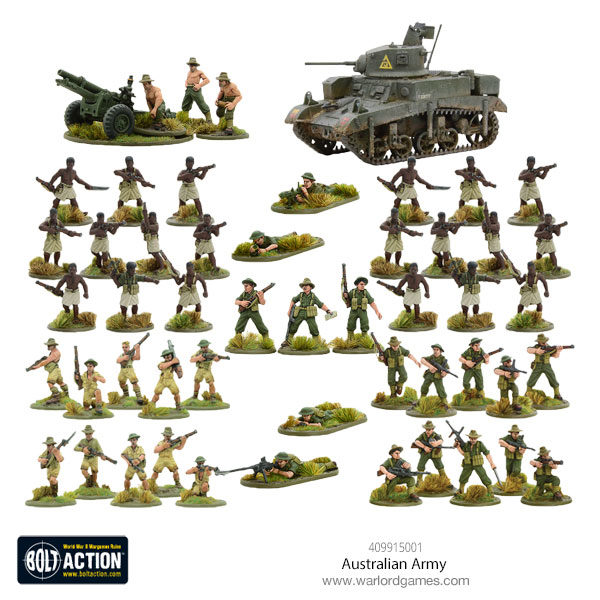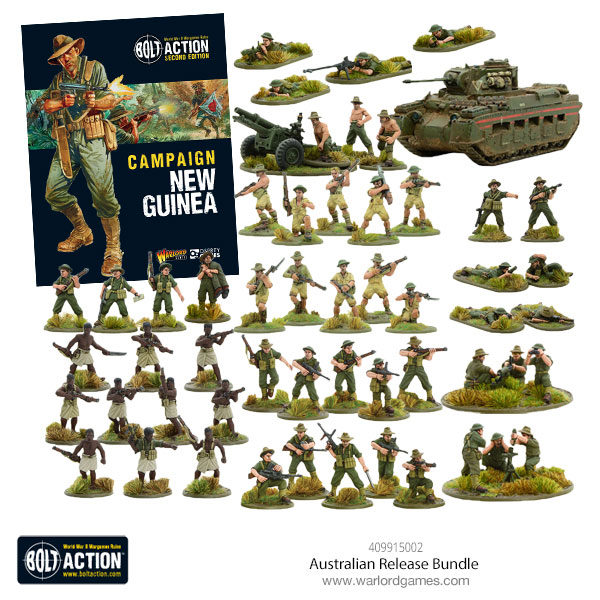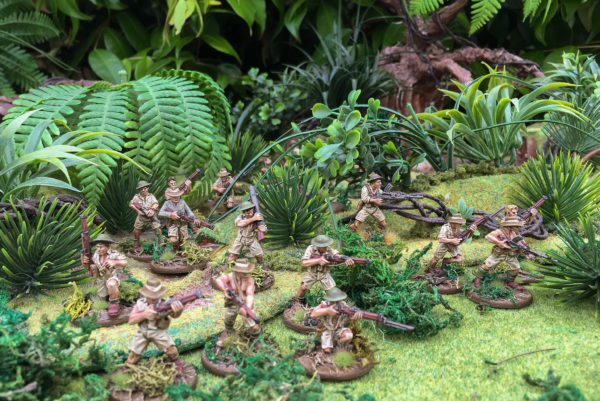
Hi guys, Bryan Cook here from the Bolt Action Alliance and welcome to another step by step painting guide, this time it’s for the Australian Militia who fought in the South West Pacific in 1942. This guide is designed to be a simple and efficient way to paint a platoon’s worth of miniatures rather quickly. This is for the Australians’ initial Khaki Drill uniform they first deployed to the theatre in, the specialised jungle green uniforms came later at the end of 1942-43. You can check out a guide I made previously for these later green uniforms here. You can use this guide for British 8th Army in the desert as well, just swap the helmet colour to a sand rather than green. Right, on with the guide!
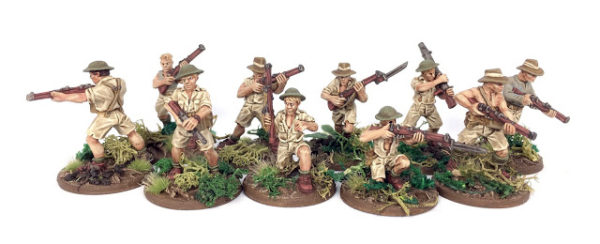
Step 1 – Add base texture
After cleaning up the flash and mould lines on your metal miniatures, use superglue to attach them to their plastic bases. The Warlord Games plastic round bases feature a lip around the edge of the design to allow the metal tab at the model’s feet to sink into them slightly. However, it’s still a good idea to fill the base up with some material to hide this and add some texture for later. You can simply use sand an PVA glue for this, but I find it doesn’t hide the metal tab well.

I prefer to use Polyfilla (or any gap or crack filling product) from a hardware store and simply smear it across the base, using a toothpick or sculpting tool to poke it about. This single step fills up the base, hides the metal tab and creates a rough earth-like texture. The result should look like below.
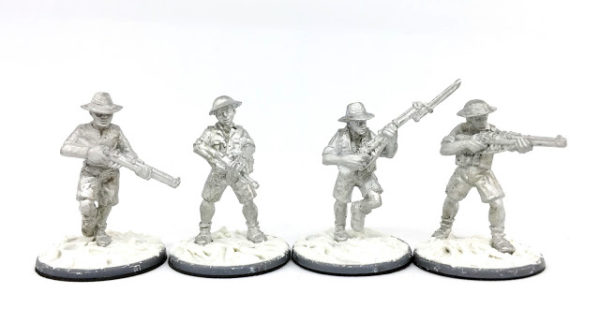
Step 2 – Coloured Primer
To save a load of time, I have primed the miniatures using a spray can of the main colour, the uniform. I have used the Skeleton Bone spray by Army Painter to give me the base colour of the Khaki Drill worn by the men.
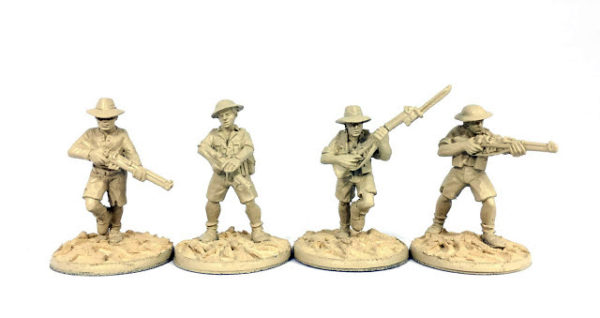
Step 3 – Base colours
Now it’s time to lay down all the other base colours besides the uniform, as that has already been done by the spray primer! The colours used are pictured below and listed here for accurate reference, GW indicates Games Workshop and VJ indicates Vallejo:
- Skin: GW Cadian Fleshtone
- Boots & Rifle stock: VJ Flat Brown
- Helmet & socks: VJ Russian Uniform
- Webbing: VJ Khaki Grey
- Under Shirt: GW Fenrisian Grey
- Gun barrels: GW Leadbelcher
- Slouch hat: VJ English Uniform
- Base: VJ German Camo Medium Brown
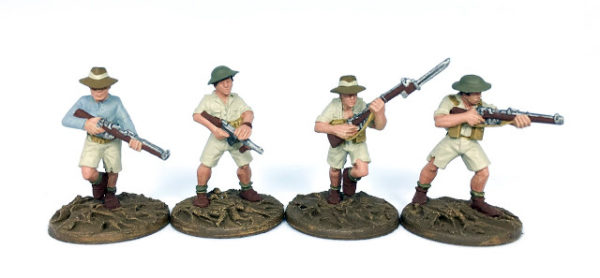
This colour scheme and the techniques are simple and perfect for batch painting many models at once. It can be a little daunting in the base colours stage, but you can knock over several squads at the same time. I chose to work on two full squads and an officer to give me a playable platoon straight away.
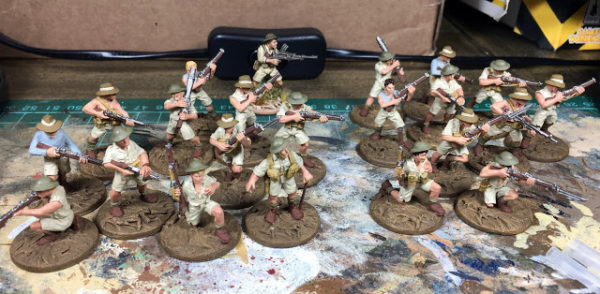
Step 4 – Highlights
Next step is to begin to add depth to the colours starting with the highlights. Using a smaller detail brush with a good point, carefully pick out all the raised areas with the following highlight colours. Most are one stage highlights, with a couple that are two. None of the colours need to be mixed to keep the process fast.
- Skin: GW Kislev Flesh, then GW Flayed One Flesh
- Boots & Rifle stock: GW Tuskgor Fur
- Helmet & socks: GW Straken Green
- Webbing: VJ Khaki
- Under Shirt: VJ Stone Grey
- Gun barrels: GW Nuln Oil wash
- Slouch hat: VJ Khaki Grey, then VJ Khaki
- Main uniform: VJ Pale Sand
- Base: Drybrush VJ Iraqi Sand

Note: the centre part of the helmet can be highlighted using a sponge, rather than a brush, to give it some texture at the same time, as seen in this image here.
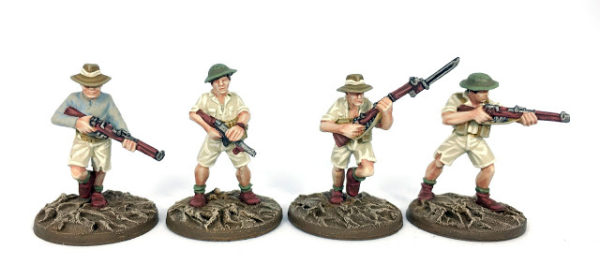
Step 5 – Quickshade ‘dip’ and eyes
The final painting stage is to use the Army Painter Quickshade product to coat the model and give us our shadows. This is an enamel product that is applied with a brush or you can even dip the entire model in it. I strongly recommend using a large old brush to paint it on rather than dip it.
After painting the Quickshade on, leave your models for 24 hours minimum to dry. In the meantime, the Quickshade blends the shadows as gravity pulls it down slightly, the slow drying time means it is very different to an acrylic wash. It is also a thick gloss varnish so your models will be well protected, if a little shiny! Remember you will need turps or white spirit to wash your brush out for this product, not water. Combined with the highlights in the previous step, the Quickshade completes a high contrast range of depth on the model which makes it stand out on the wargaming table.
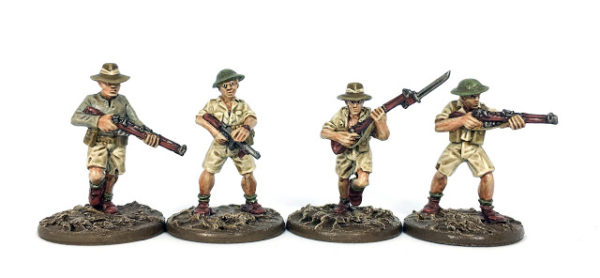
After the model is touch dry at around the 24 hours mark I paint the eyes. This is an entire optional step. My method for painting eyes is to paint a white horizontal line followed by a black dot, all using the smallest brush with a great point, usually a 00 sized one.
Step 6 – Matte varnish and basing material
The Quickshade will leave your models with a very gloss finish. I suggest giving your models a coat of matte varnish but wait 3 days after applying the Quickshade to do so. This allows it to dry completely and avoid any dusting or cracking which I have noticed can occur if you don’t wait. For a spray varnish I recommend Testors Dullcoate, and for paint on matte varnish I use AK Interactive Ultra matte varnish.
To finish the Australian Militia models off, give the bases a jungle look by using as many different green basing materials as you can gather. For mine, I have lichen (used in model railways), green static grass tufts and even a few leaves from plastic aquarium plants.
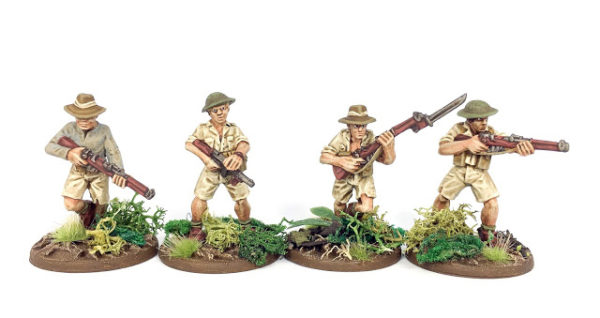
So there you have it, a fast and simple way to get your platoon of Australia’s “ragged bloody heroes” – the militia, onto your tabletop or display case.
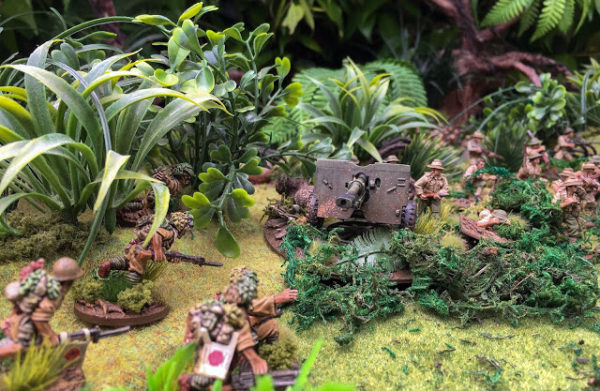
-Bryan
The battle for the Pacific!
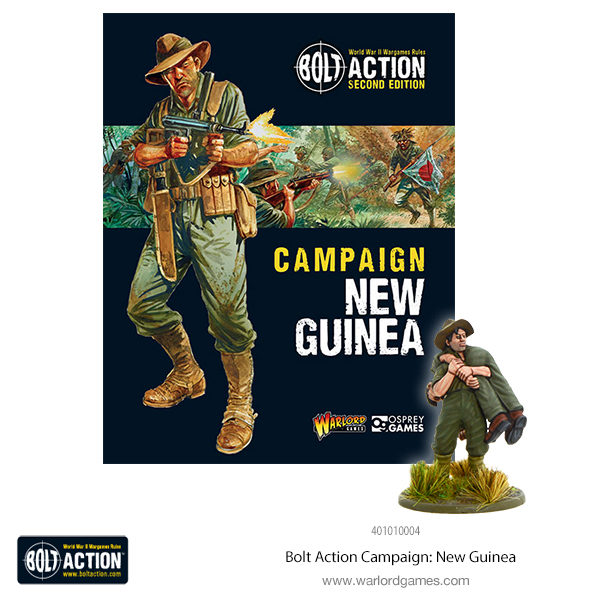
Control the Pacific!
